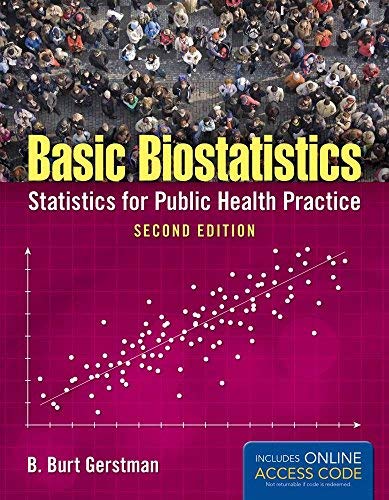Nonexercise activity thermogenesis (NEAT). We routinely burn calories through the nonexercise activities of daily life. In this
Question:
Nonexercise activity thermogenesis (NEAT). We routinely burn calories through the nonexercise activities of daily life. In this exercise, we will use the acronym NEAT to refer to “nonexercise activity thermogenesis.” NEAT includes such activities of daily living, fidgeting, maintenance of posture, spontaneous muscle contraction, and maintaining posture when not recumbent. It has been hypothesized that individual differences in NEAT may explain why some people tend to gain more weight than others. To study this phenomenon, Levine and coworkers (1999) deliberately overfed 16 young healthy volunteers for an 8-week period. The amount of fat the volunteers gained (FATGAIN, kg) and change in NEAT activity
(kcal/day) during this period are listed in the following table.
Observation NEAT FATGAIN 1 −100 4.2 2 −60 3.0 3 −20 3.8 4 140 2.6 5 140 3.2 6 150 3.5
(a) Use regression methods to address whether the amount of fat gained is related to the change in NEAT. (Start your analysis with a scatterplot.) When you have completed your analyses, return to the practical question and discuss your findings.
(b) Predict the amount of fat gain in this experiment by a person who has a change of 600 calories in NEAT.
(c) Identify the point on your graph. The regression line always goes through this point (see Exercise 14.11). Use and the point predicted in part
(b) of this exercise to draw the least squares regression line on the scatterplot you produced in part (a).
(d) Determine the residuals associated with the first three observations in the data set. Show these on the scatterplot.
Step by Step Answer:

Basic Biostatistics Statistics For Public Health Practice
ISBN: 9781284067583
2nd Edition
Authors: B.Burt Gerstman





